Pixie Reef, just to the north-east of Cairns, is an inshore platform reef with a front which is exposed to prevailing winds, and a lee side with a lagoon and channels. I was at this reef on 25th November 2020 in the back lagoon, searching for a massive Porites coral, that I’ve since named Porites Craig. In due course there will be an inventory of these very large and very old Porites. Separately, I have blogged on my first visit to this reef: explaining the importance of measuring the old corals to know their annual growth rates; and also the importance of considering different habitat types when drawing conclusions about reef health.
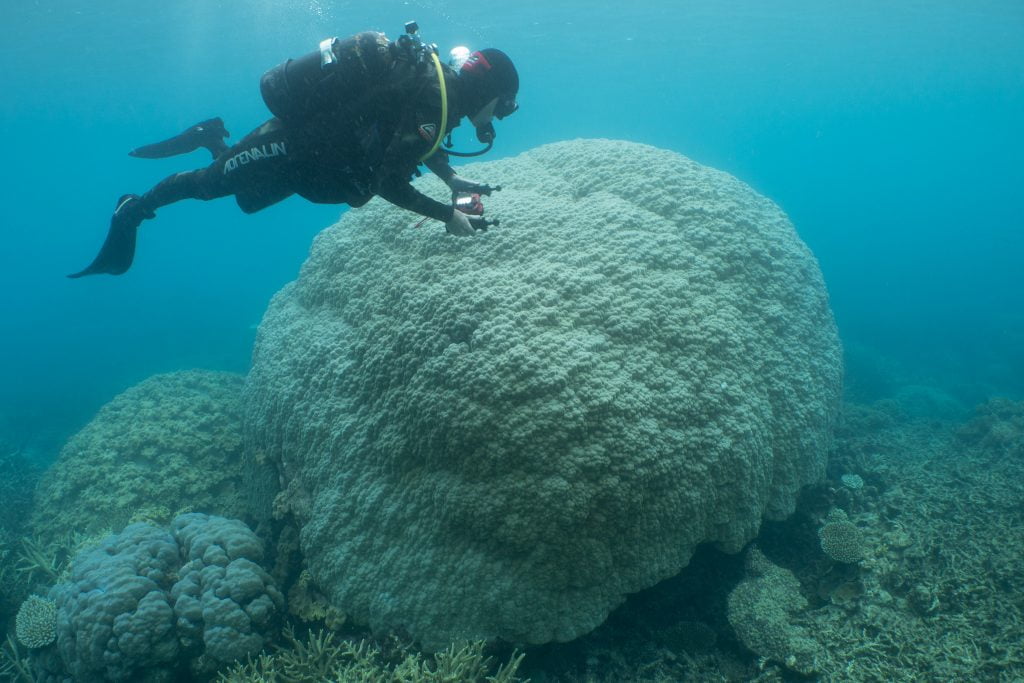
Pixie Reef was designated as badly bleached (more than 60% bleached) in an aerial survey undertaken by Terry Hughes from James Cook University on 22nd March 2016, at the co-ordinates 145.8624573° E and 16.54697227° S. These co-ordinates correspond with the reef crest, consistent with his methodology as detailed in ‘Metadata: A spatial database of bleaching scores for 931 coral reefs on the Great Barrier Reef in the Austral Summer of 2016’ by Terry Hughes et al, as published in the journal Ecology.
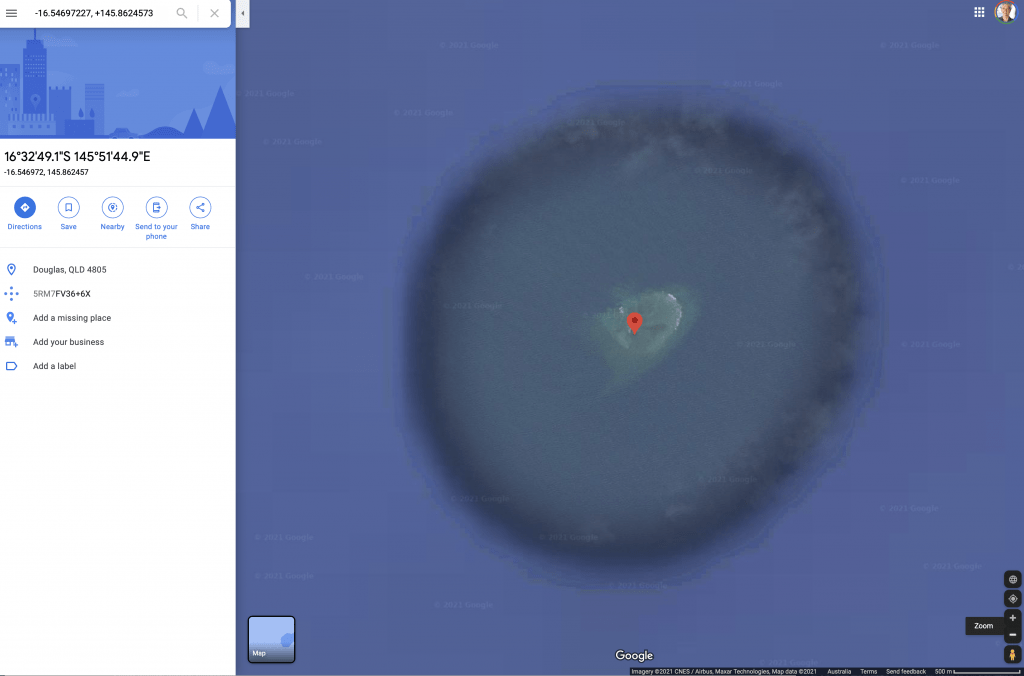
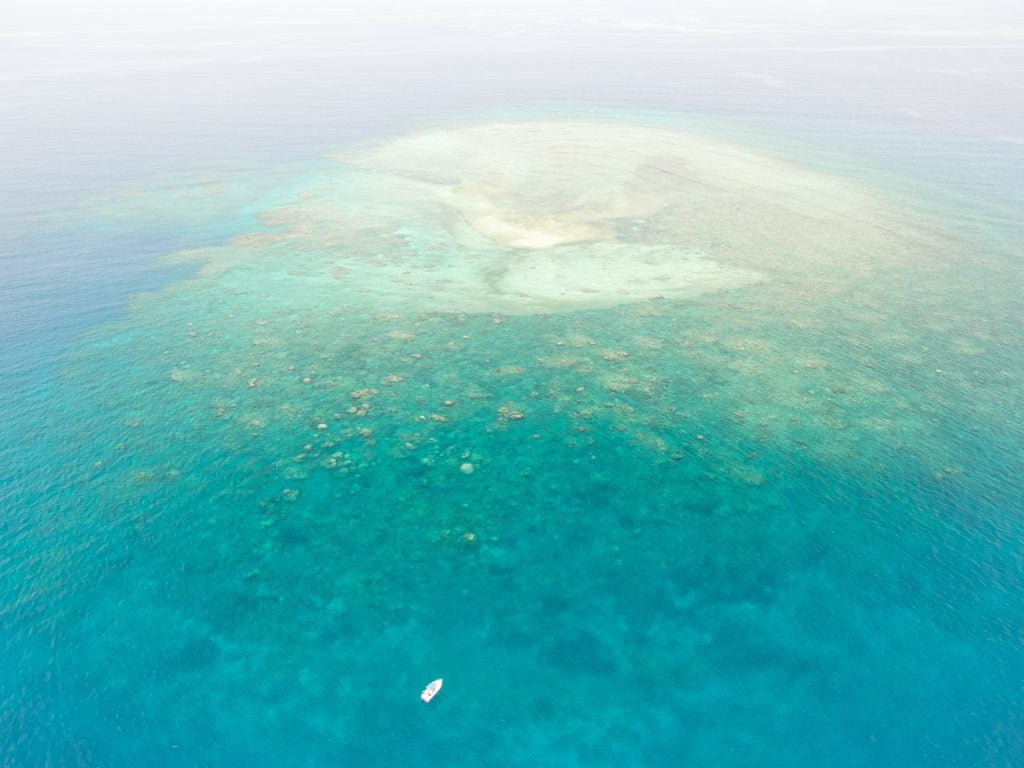
On 25th November Stuart Ireland took aerial photographs from above the reef crest, reef front, and back lagoon at Pixie Reef. The photographs taken at 120 metres altitude above the reef crest suggest this reef is rather barren because it is impossible to distinguish individual corals from this altitude. At just 5 metres above the reef crest it is possible to see some colour and some corals, but it would be necessary to get into and under the water to do a proper assessment. Click on the thumbnails for a larger view of these images embedded into Table 1, Scale Profile – Pixie Reef, scroll down the first column that is labelled ‘@crest’.
Table 1. Scale Profile, Pixie Reef
The position is relative to sea level at the time the photograph was taken in metres, so +120 metres is this height above the coral reef, and -1 metres (to be added) is a photograph taken at this depth below the water.The photographs taken from above the lagoon (Table 1, second column) show a very different habitat type. I can see what appear to be healthy brown plate corals in this habitat type from the aerial taken at 5 metres. These same type of plate corals were filmed under the water and can be viewed in my first ever transect film (I repeat an image of them before each of the three transects).
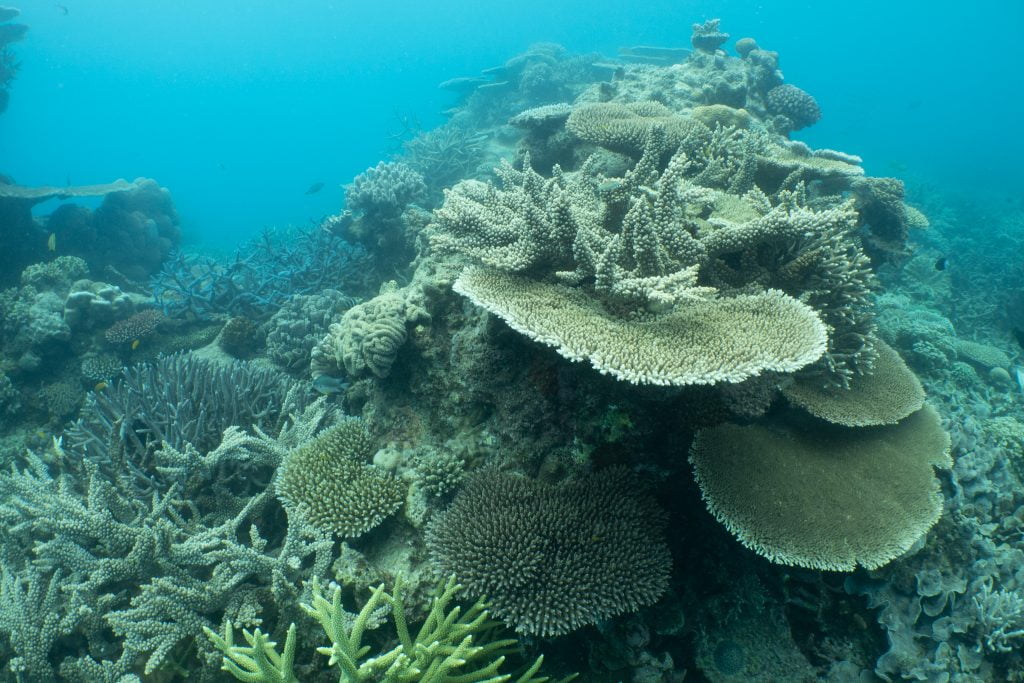
At 40 and 120 metres above the reef lagoon I think I can see Porites Craig, which was measured as 6.7 metres wide (2.9 metres high) on 25th November, 2020.
It is of course, impossible to find such very large corals at the reef crest because there is the constraint of sea level. From 120 metres above the reef lagoon, and given the very pale colour that is this massive coral, it might erroneously be concluded it was so bleached that it was dying. In fact, wide angle and close-up photographs from under the water show that Porites Craig is very much alive with an intact corallite structure containing polyps with tentacles. Close-up this coral, Porites Craig, looks quite a different colour than from 120 metres altitude and even from a few metres distance away.
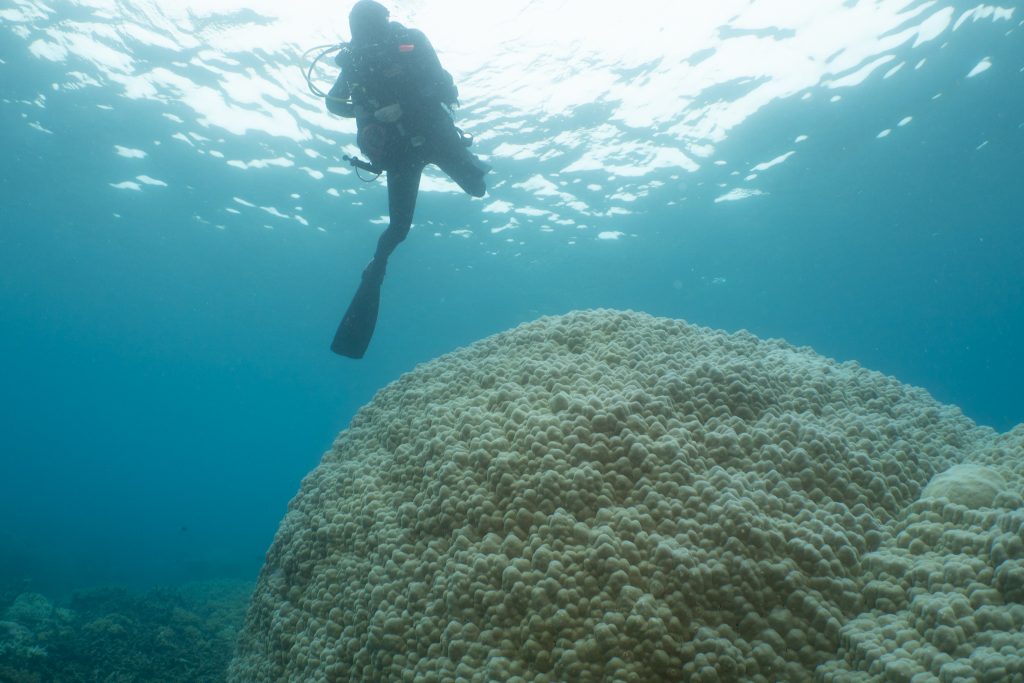
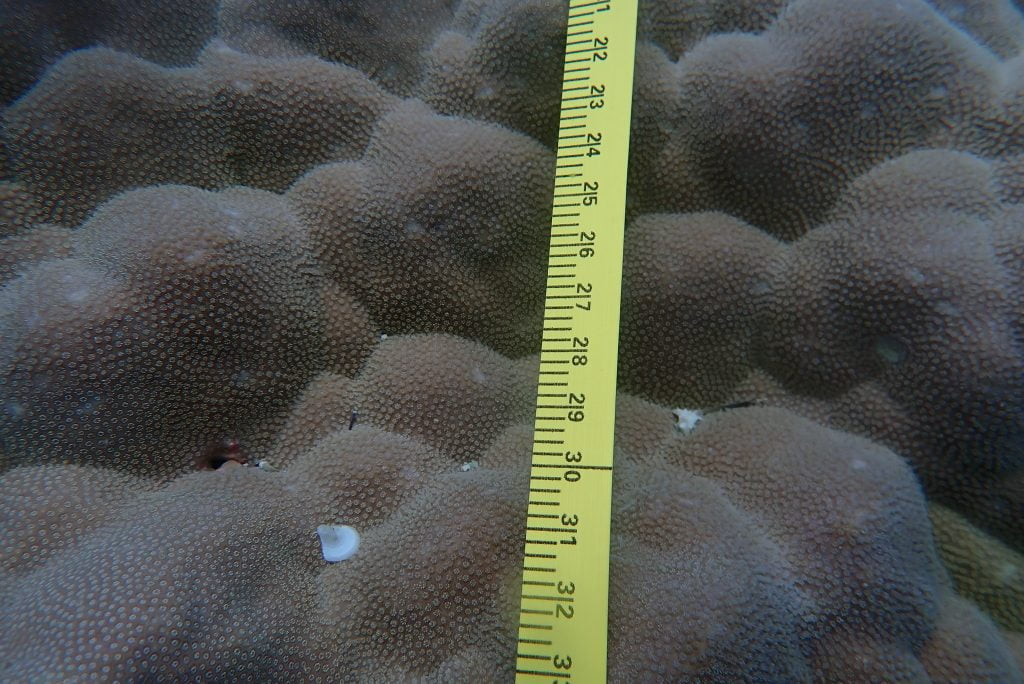
The transect video provides a wide angle view (horizontal and vertical perspectives) of three ten metre sections of reef, following the reef contour at five metres depth. We laid the first transect from a large Porites (not Porites Craig) and then we left ten metres, before laying another 10 metre transect. When I return to Pixie reef I intend laying a series of transects from Porites Craig. On 25th November I ran out of air soon after finding Craig.
Stuart Ireland not only took the transect video, but he also took photographs at each metre along these transects, and you can see them in Table 2. Click on the thumbnails for a larger view.
Table 2. Horizontal Photographic Transects at Pixie
Date: 25 Nov 2020Habitat: Lagoon
D: Depth in meter, R: Replication
| D | R | @0m | @1m | @2m | @3m | @4m | @5m | @6m | @7m | @8m | @9m | @10m |
|---|---|---|---|---|---|---|---|---|---|---|---|---|
| 5 | 1 | |||||||||||
| 5 | 2 | |||||||||||
| 5 | 3 |
I calculate live coral cover from the 11 photographs from the first transect at Pixie Reef (top row) to be 35%. Following current methodologies that focus on % live coral, then perhaps it is logical to conclude that this reef is 65% dead; assuming this short 10 metres to be representative of the reef more generally?
The value of 65% is a ‘back of the envelope’ calculation, derived from visual assessment of each of the photographs, as follows for the first five photographs:
Photograph 1 (@0 metres, top row) shows an Acropora, perhaps A. fastigata, covering about 20% of the total area within the photograph.
Photograph 2 (@1 metre) shows mostly plate Acropora spp. that I estimate cover about 80% of the area. What is the purple encrusting coral in the top left corner of the photograph?
Photograph 3 (@2 metres) has perhaps 40% coral coverage. I can see mostly plate corals in the genus Acropora, and a Diploastrea sp. (family Favidae) as well as 2 Fungia sp..
Photograph 4 (@3 metres) has perhaps 60% of the area covered in live coral. I can see 3 Fungia sp., plate corals (Acropora sp.) and what is the foliaceous species in the bottom-centre of the photograph?
Photograph 5 (@4 metres) shows an area with maximum coverage by a species of Acropora, perhaps A. pulchra. But because this species of branching hard coral only ever shades about 40% of the area that it extends over, I have calculated coral coverage to be only about 40%.
I will add my notes for the remaining 6 photographs into a more formal assessment.
I get quite a different impression of coral cover from the video transects, which have been taken from two different perspectives (horizontal and vertical) for each ten metre section of reef. The video give the impression that this reef is badly bleached, more so than the photographs.
I intend to return and see if the colour of the corals changes at Pixie Reef, in particular whether the Acropora sp. that is currently dark blue in colour, turns beige. This is my hypothesis based on the latest research into corals that can bleach colourful, as explained at my newest webpage entitled ‘Coral Colour’.
I am planning to return to this reef to run more transects (video and photographic) and at different depth, and also along the reef crest and reef front that represent very different habitats. Ideally we will have enough photographs from the back lagoon, reef crest and reef front from which we can draw statistically significant conclusions about differences in coral cover, coral colour and species diversity between the different habitat types.
It is my hypothesis that flying-over reef crests can not provide a true indication of the overall health of a coral reef. Yet this is the tax-payer funded method from which it has been reported worldwide that the Great Barrier Reef is more than half dead, including the corals at Pixie Reef.
Some people like their corals very colourful. I’m inclined to the more subtle, so despite being mostly a most pale beige in colour, and some of the corals even bleached white and others bleached blue, I found this reef enchanting.
Table 3. General Reef Photographs
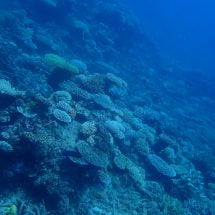 | 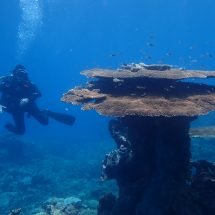 | 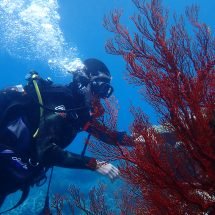 |
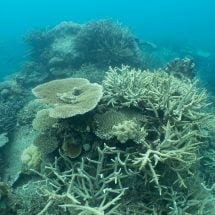 | 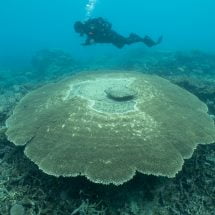 | 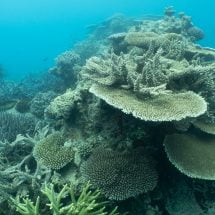 |
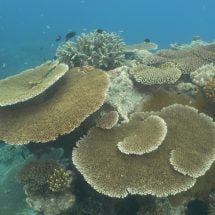 |  |  |
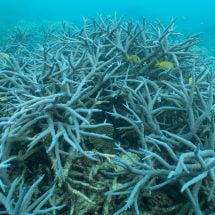 | 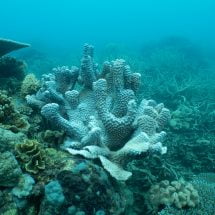 | 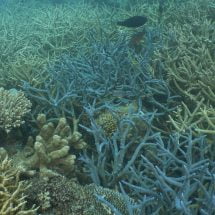 |
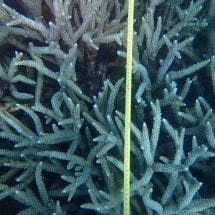 | 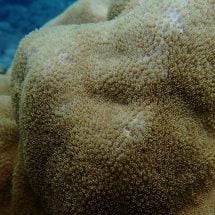 |  |
Considering just the last/fifth row:
The first photograph is of a branching Acropora, perhaps A. pulchra. While this coral colony may not be a particularly attractive colour, it is very much alive and healthy. The axial corallites are a florescent white, and there are intact radial corallites down each of the branches. The second photograph is a close-up of one of the massive Porites that we photographed and measured, not Porites Craig. The polyps with tentacles are a golden brown/beige colour extended from a pale pink corallite. The third photograph in this row shows a patch of bleached coral. These polyps have expelled their zoozanthellae/symbiotic algae but the coral colony while a stark white still has polyps with tentacles in an apparently intact corrallite structure. There is evidence of some decay towards the top back of this patch of bleached coral that is part of a much larger massive Porites with brown tentacles.
Could someone please confirm that the very pale coral in the second column, fourth row of Table 3, is in fact Turbinaria peltata. I shall be adding to the photographs in Table 3 after my next visit, click on the thumbnails for a better view.
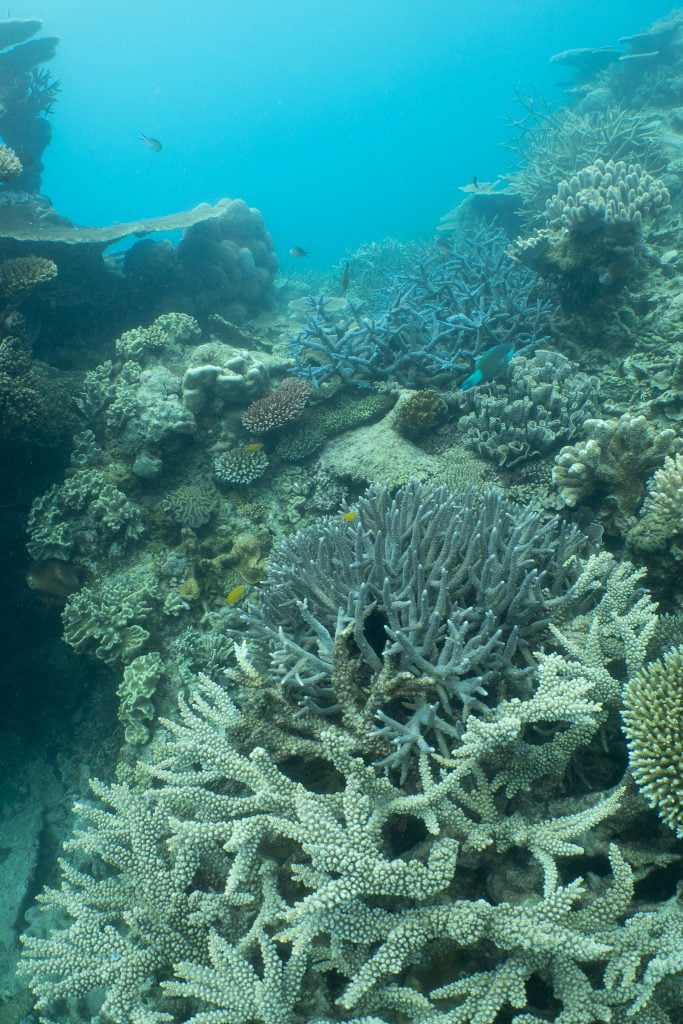
Postscript: We didn’t find any Pixies.

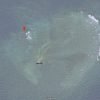
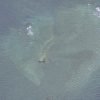
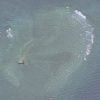
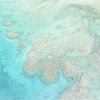
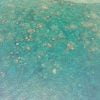


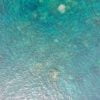
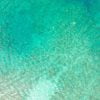
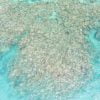

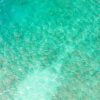
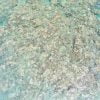
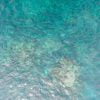
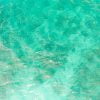
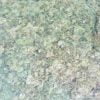
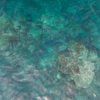
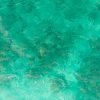
 Jennifer Marohasy BSc PhD is a critical thinker with expertise in the scientific method.
Jennifer Marohasy BSc PhD is a critical thinker with expertise in the scientific method.
